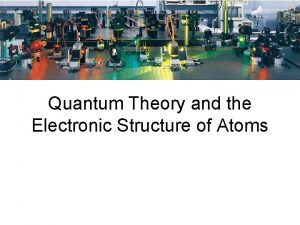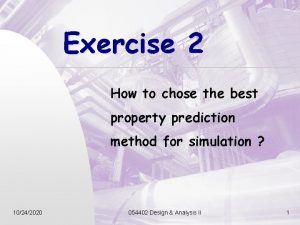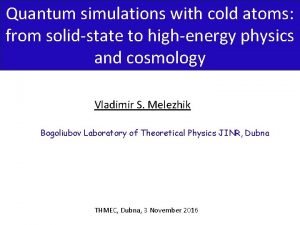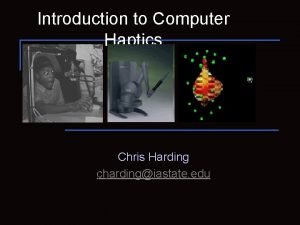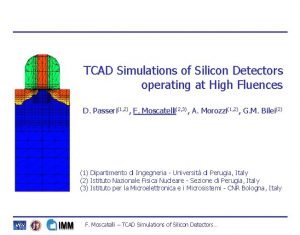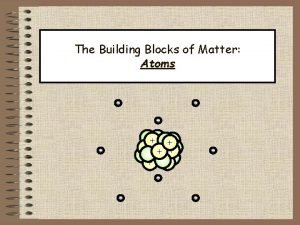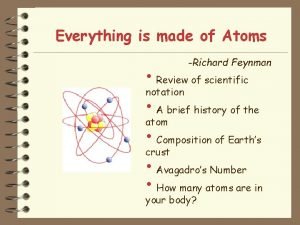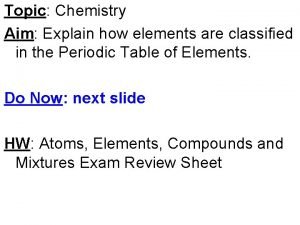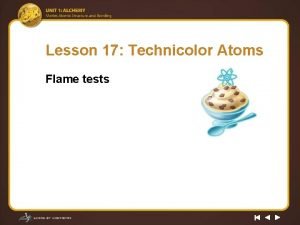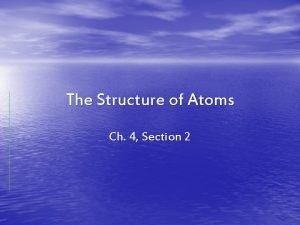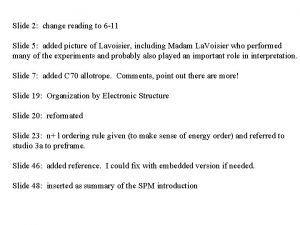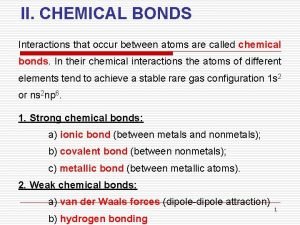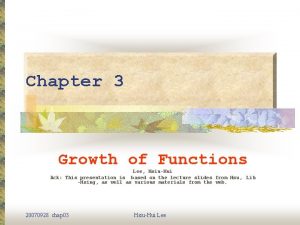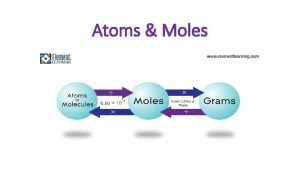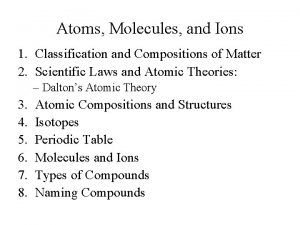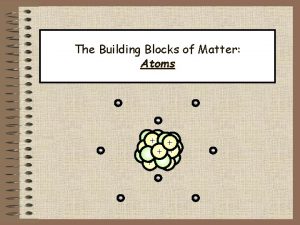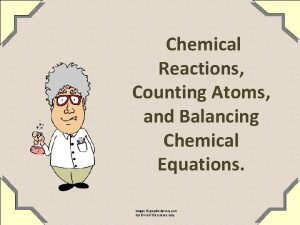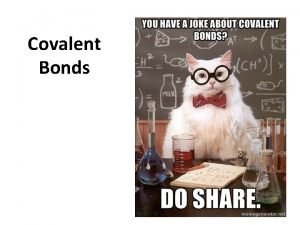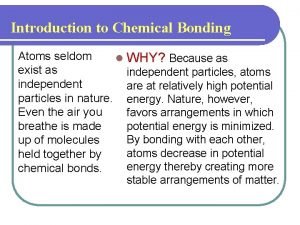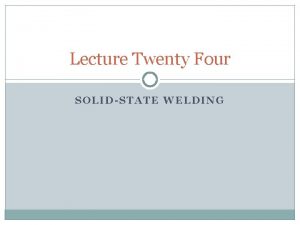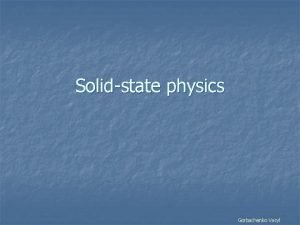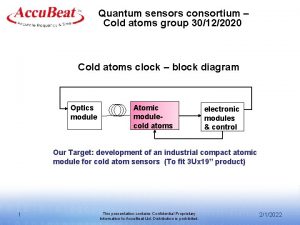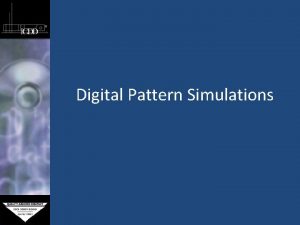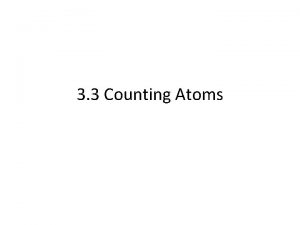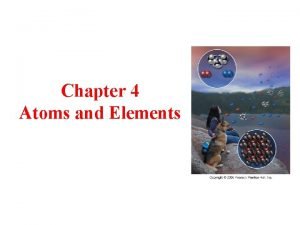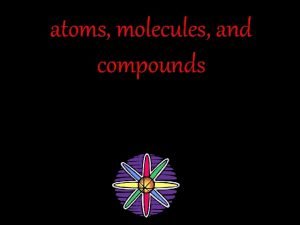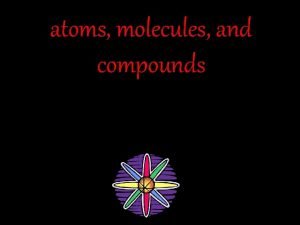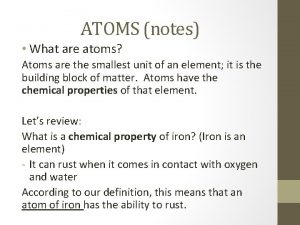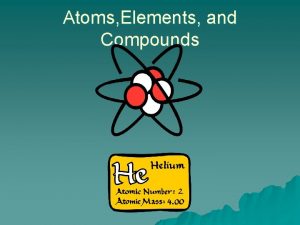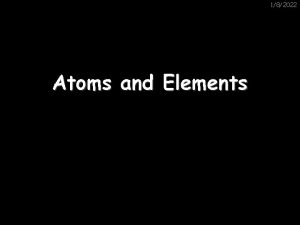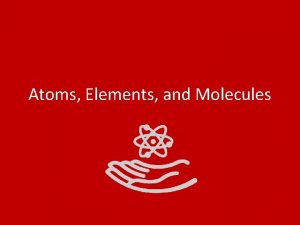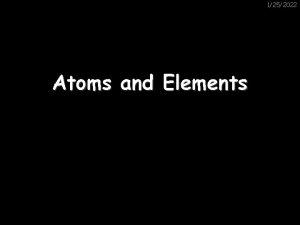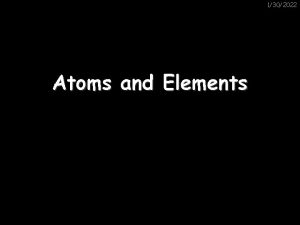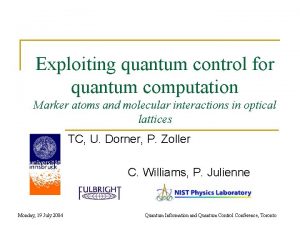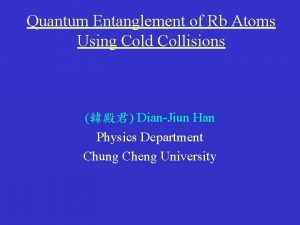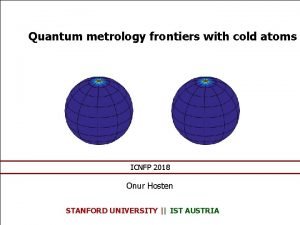Quantum simulations with cold atoms from solidstate to





































- Slides: 37

Quantum simulations with cold atoms: from solid-state to high-energy physics and cosmology Vladimir S. Melezhik Bogoliubov Laboratory of Theoretical Physics JINR, Dubna THMEC, Dubna, 3 November 2016

Outline Quantum simulations: why cold atoms ? Solid state physics: modeling matter phase-transitions Simulations with degenerate quantum gases High energy physics: modeling quark-gluon plasma, string theory, … • Cosmology: unstable quantum vacuum • Outlook, goals and opportunities • •

Quantum simulations: why cold atoms ? R. Feynman’s vision: a quantum simulator to study the quantum dynamics of another system R. Feynman, Int. J. Theor. Phys. 21, 467 (1982) Y. Manin, Computable and Uncomputable (Sovetskoye Radio Press, Moscow) (in Russian) 1980. development of physics of ultracold atoms has opened unique possibility for realisation of R. Feynman’s idea: to use simple quantum systems with desiered properties (amenable quantitative description and modeling) to describe more complex systems and phenomena

Quantum simulations: why cold atoms ? Quantum simulation with fully controlled systems control over: particle number quantum state interaction • attractive interactions BCS-like pairing in finite systems • repulsive int. +splitting of trap entangled pairs of atoms (quantum information processing) • + periodic potential quantum many-body physics (systems with low entropy to explore Bose-Hubbard such. Physics as quantum magnetism) • . . .

Quantum simulations: why cold atoms ? control over: particle number

Quantum simulations: why cold atoms ? control over: particle number

Quantum simulations: why cold atoms ? control over: particle number 1/e-lifetime: 250 s Exposure time 0. 5 s CCD distance between 2 neighbouring atom peaks: ~ 6 s 1 -10 atoms can be distiguished with high fidelity > 99%

Quantum simulations: why cold atoms ? control over: particle number • 2 -component mixture in reservoir T=250 n. K • superimpose microtrap • switch off reservoir p 0= 0. 9999 + magnetic field gradient in axial direction

Quantum simulations: why cold atoms ? control over: particle number with high fidelity

Quantum simulations: why cold atoms ? control over: interaction

Quantum simulations: why cold atoms ? control over: interaction

Quantum simulations: why cold atoms ? control over: interaction 3 D Feshbach resonance single-channel pseudopotential strong confinement 1 D Confinement induced resonance (CIR) single-channel pseudopotential with renormalized interaction constant M. Olshanii, PRL 81, 938 (1998).

Quantum simulations: why cold atoms ? control over: interaction 3 D Feshbach resonance single-channel pseudopotential strong confinement 1 D Confinement induced resonance (CIR) single-channel pseudopotential with renormalized interaction constant M. Olshanii, PRL 81, 938 (1998).

Quantum simulations: why cold atoms ? control over: interaction 3 D Feshbach resonance single-channel pseudopotential strong confinement 1 D Confinement induced resonance (CIR) single-channel pseudopotential with renormalized interaction constant M. Olshanii, PRL 81, 938 (1998).

Elmar Haller –> Outstanding Doctoral Thesis in AMO Physics Recipients for 2011

Shifts and widths of Feshbach resonances in atomic waveguides Sh. Saeidian, V. S. Melezhik , and P. Schmelcher, Phys. Rev. A 86, 062713 (2012) d-wave FR at 47. 8 G develops in waveguide as depending on minimums and stable maximum of transmission coefficient T

Shifts and widths of Feshbach resonances in atomic waveguides Sh. Saeidian, V. S. Melezhik , and P. Schmelcher, Phys. Rev. A 86, 062713 (2012) d-wave FR at 47. 8 G develops in waveguide as depending on minimums and stable maximum of transmission coefficient T experiment

Shifts and widths of Feshbach resonances in atomic waveguides Sh. Saeidian, V. S. Melezhik , and P. Schmelcher, Phys. Rev. A 86, 062713 (2012) d-wave FR at 47. 8 G develops in waveguide as depending on minimums and stable maximum of transmission coefficient T experiment theory Olshanii formula works for s, d, and g FRs

Quantum simulations: why cold atoms ? control over: quantum state 2 R r = 2 R in 1 D: analytic solution for energy: T. Busch et al. , Found Phys Vol. 28, No. 4 549 -559 (1998) same r same energy M. D. Girardeau, PRA 82, 011607(R) (2010)

Quantum simulations: why cold atoms ? control over: quantum state 2 distinguishable fermions 2 identical fermions F. Serwane et al. Science 332(2011)336

Solid state physics: modeling phase-transitions

Solid state physics: modeling phase-transitions

Solid state physics: modeling phase-transitions

Solid state physics: modeling phase-transitions

BCS-BEC crossover in ultracold Fermi gas

BCS-BEC crossover in ultracold Fermi gas diffusion Monte-Carlo simulation S. Pilati & S. Giorgini PRL 100 (2008) 030401 experiment N. Navon et al Science 328 (2010) 729

BCS-BEC crossover in ultracold Fermi gas diffusion Monte-Carlo simulation S. Pilati & S. Giorgini PRL 100 (2008) 030401 experiment N. Navon et al Science 328 (2010) 729

BCS-BEC crossover in ultracold Fermi gas diffusion Monte-Carlo simulation S. Pilati & S. Giorgini PRL 100 (2008) 030401 experiment N. Navon et al Science 328 (2010) 729

BCS-BEC crossover in ultracold Fermi gas diffusion Monte-Carlo simulation S. Pilati & S. Giorgini PRL 100 (2008) 030401 experiment N. Navon et al Science 328 (2010) 729

Simulations with degenerate quantum gases Gross-Pitaevski equation Bose-Einstein condensation degenarate quantum gases

Modeling quark-gluon plasma, string theory Optically-trapped, strongly-interacting atomic Fermi gases provide a unique possibility for modeling nonperturbative many-body systems and theories. Particularly quark-gluon plasma, string theory a highly-degenerate Fermi gas of = shear viscosity/ entropy density A. Turlapov, J. Kinast, B. Clancy, L. Luo, J. Joseph, J. E. Thomas, J Low Temp Phys 150 (2008) 567

Modeling unstable quantum vacuum Take 2 BECs and couple them with a laser light. RF BEC 1 BEC 2 Stable (true vacuum) Their phase difference behaves like a pendulum, which has stable and unstable points. -- relativistic field equation of the early Universe. Unstable (false vacuum)

Unstable quantum vacuum: BEC simulations “Bubbles” appear during the transition to true vacuum

Opanchuk et al. Annalen der Physik 525 (2013) 866

Outlook, goals and opportunities Quantum simulation with fully controlled systems control over: particle number, quantum states, interaction Fast-growing field, promising applications in study of many problems I. M. Georgescu et al. Quantum simulations, Rev. Mod. Phys. 86 (2014) 153 J. I. Cirac and P. Zoller, Goals and opportunities in quantum simulation, Nature Phys. 8 (2012) 264 M. Dalmonte and S. Montangero, Lattice gauge theories simulations…, ar. Xiv: 1602. 03776 ~ few tens experimental groups worldwide Rb, Cs, K, Sr, Li … Rb 2 , Cs 2 , Rb. K … 1 D, 2 D, 3 D

Outlook, goals and opportunities Quantum simulation with fully controlled systems control over: particle number, quantum states, interaction Fast-growing field, promising applications in study of many problems I. M. Georgescu et al. Quantum simulations, Rev. Mod. Phys. 86 (2014) 153 J. I. Cirac and P. Zoller, Goals and opportunities in quantum simulation, Nature Phys. 8 (2012) 264 M. Dalmonte and S. Montangero, Lattice gauge theories simulations…, ar. Xiv: 1602. 03776 ~ few tens experimental groups worldwide Rb, Cs, K, Sr, Li … Rb 2 , Cs 2 , Rb. K … 1 D, 2 D, 3 D recently -> hybrid “atom-ion” systems Li-Yb+, Rb-Ba+ …

in proposed quantum simulators improved controllability and scalability are required.
 At stp which substance is the best conductor of electricity
At stp which substance is the best conductor of electricity Quantum theory and the electronic structure of atoms
Quantum theory and the electronic structure of atoms Electrons in atoms section 2 quantum theory and the atom
Electrons in atoms section 2 quantum theory and the atom Electrons in atoms section 2 quantum theory and the atom
Electrons in atoms section 2 quantum theory and the atom Quantum physics vs mechanics
Quantum physics vs mechanics Quantum physics vs quantum mechanics
Quantum physics vs quantum mechanics Pinpoint simulations 777
Pinpoint simulations 777 Yes or no
Yes or no World history simulations
World history simulations Baton simulations
Baton simulations Clinical simulations in nursing education
Clinical simulations in nursing education Simulations for solid state physics
Simulations for solid state physics Chris harding simulations
Chris harding simulations Www.irs.gov/app/understanding taxes/student/simulations.jsp
Www.irs.gov/app/understanding taxes/student/simulations.jsp Tcad simulations
Tcad simulations Lesson 1 the origins of the cold war
Lesson 1 the origins of the cold war How to count atoms
How to count atoms Atoms the building blocks of matter
Atoms the building blocks of matter Atoms and their isotopes pogil
Atoms and their isotopes pogil Are atoms in everything
Are atoms in everything Where are the noble gases on the periodic table
Where are the noble gases on the periodic table Technicolor atoms flame test lab answers
Technicolor atoms flame test lab answers Chapter 3 atoms the building blocks of matter
Chapter 3 atoms the building blocks of matter Linear density and planar density
Linear density and planar density Atoms escape room digital locks answers
Atoms escape room digital locks answers Chapter 4 section 2 the structure of atoms
Chapter 4 section 2 the structure of atoms Aristotle fire earth water air
Aristotle fire earth water air Seeing atoms with a microscope
Seeing atoms with a microscope Interactions between atoms occur
Interactions between atoms occur The atoms family atomic math challenge
The atoms family atomic math challenge How atoms are in observable
How atoms are in observable Atoms to moles
Atoms to moles Classification of atoms
Classification of atoms The smallest building block of matter
The smallest building block of matter Counting atoms and balancing equations
Counting atoms and balancing equations Why do atoms bond?
Why do atoms bond? Trihydrogen monophosphide chemical formula
Trihydrogen monophosphide chemical formula Chapter 6 chemistry in biology
Chapter 6 chemistry in biology

